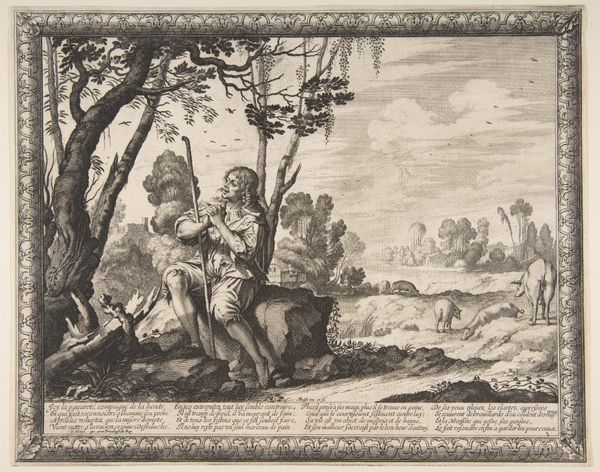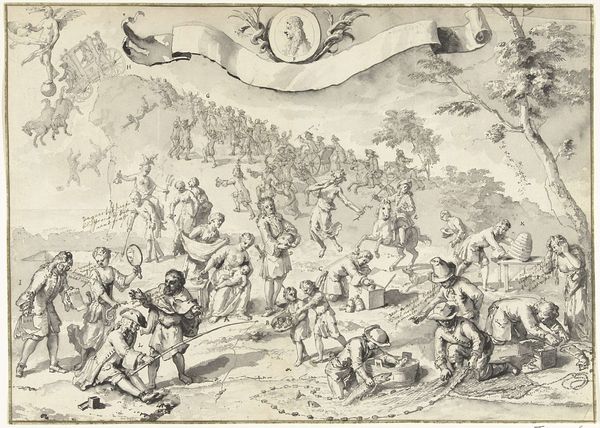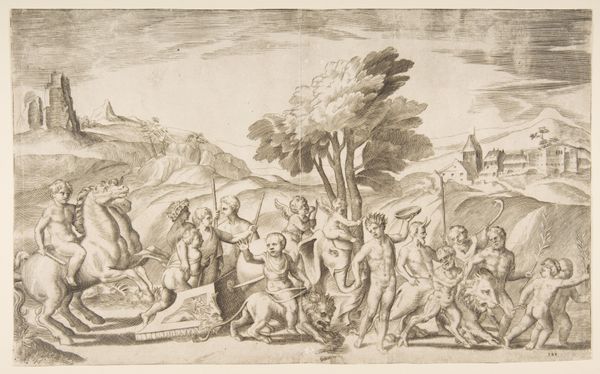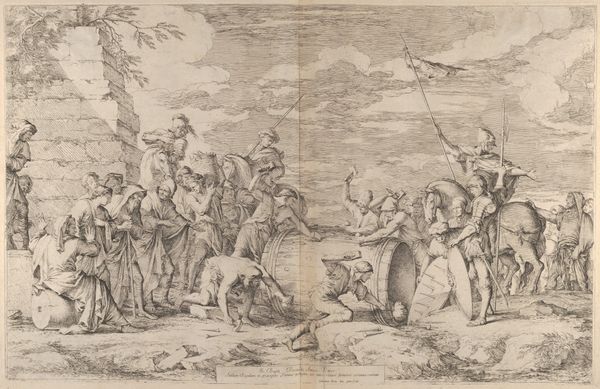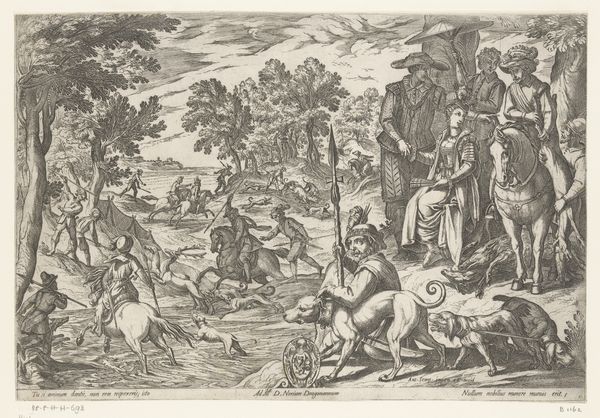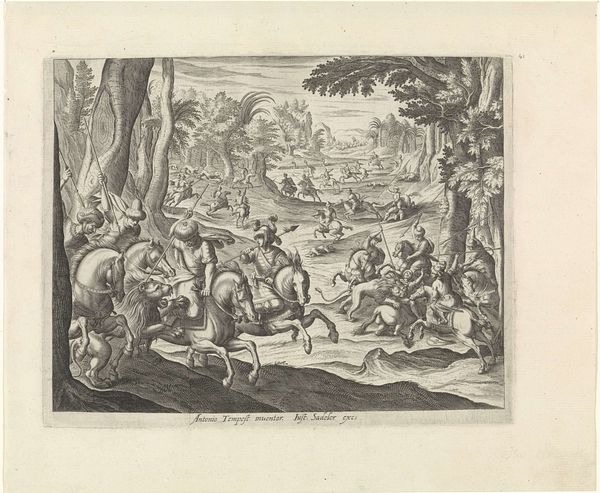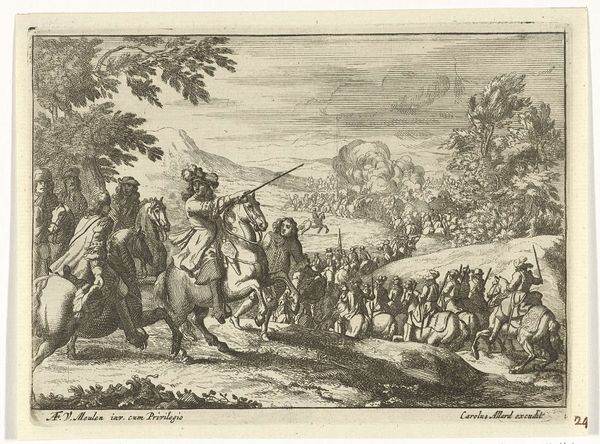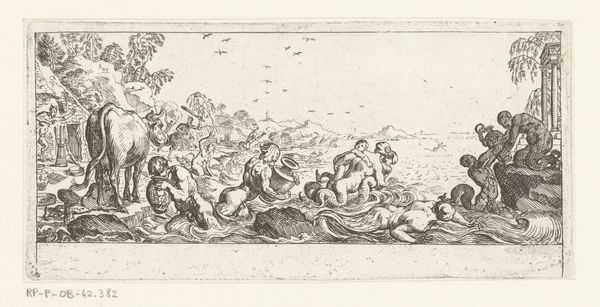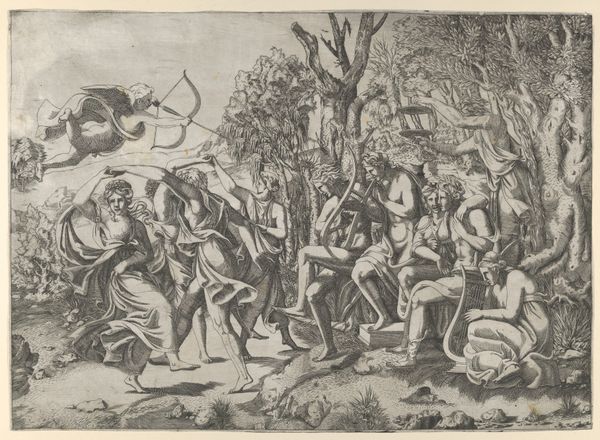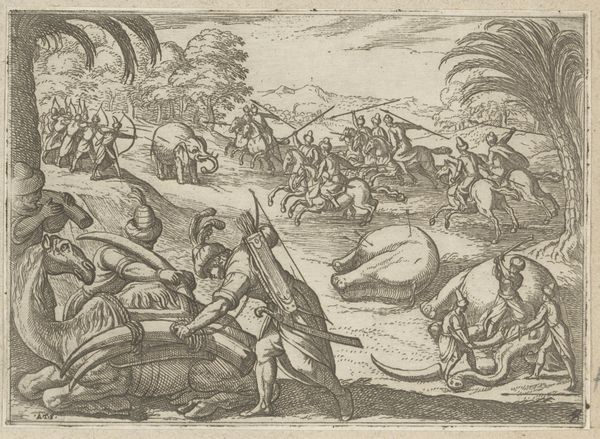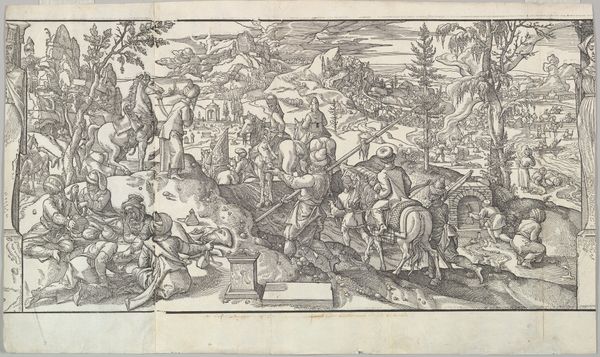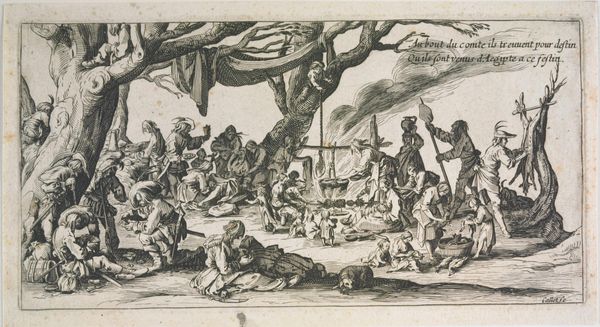![Illustration til Adam Olearius, “Persianischer Rosenthal von einem Sinnreichen Poeten Schich Saadi […]”, Schleswig 1660 by Christian Rothgiesser](/_next/image?url=https%3A%2F%2Fd2w8kbdekdi1gv.cloudfront.net%2FeyJidWNrZXQiOiAiYXJ0ZXJhLWltYWdlcy1idWNrZXQiLCAia2V5IjogImFydHdvcmtzLzcxNTIwMmI4LWZkYzYtNGU4Yy05NzQ5LTUyM2I5ZWU5NDk2ZC83MTUyMDJiOC1mZGM2LTRlOGMtOTc0OS01MjNiOWVlOTQ5NmRfZnVsbC5qcGciLCAiZWRpdHMiOiB7InJlc2l6ZSI6IHsid2lkdGgiOiAxOTIwLCAiaGVpZ2h0IjogMTkyMCwgImZpdCI6ICJpbnNpZGUifX19&w=3840&q=75)
Illustration til Adam Olearius, “Persianischer Rosenthal von einem Sinnreichen Poeten Schich Saadi […]”, Schleswig 1660 1660
0:00
0:00
print, engraving
#
baroque
# print
#
landscape
#
figuration
#
history-painting
#
engraving
Dimensions: 97 mm (height) x 130 mm (width) (bladmaal)
Curator: At first glance, I find this image rather frenetic, like a whirlwind of small figures caught in some untold story. The light is also striking with this contrastive rendering of the landscape, isn't it? Editor: Indeed. This is Christian Rothgiesser's "Illustration til Adam Olearius, \u201cPersianischer Rosenthal von einem Sinnreichen Poeten Schich Saadi [\u2026]\u201d, Schleswig 1660," an engraving that provides a fascinating glimpse into 17th-century European perceptions of Persia. Curator: Persia, really? Because the cultural visual language seems...Europeanized. How interesting that the visual coding is being appropriated for the viewer's cultural familiarity. Do you think this has implications for cultural misinterpretation? Editor: Precisely. The image accompanies Adam Olearius's travelogue, itself a product of cross-cultural encounter. The print, produced in 1660, functions as both illustration and commentary, shaping European understanding through familiar, Baroque visual tropes, but inevitably filtered by European conventions and agendas. It tells a story, but whose story is being privileged here? Curator: Well, I see figures engaged in what appears to be travel preparations, some with laden camels, set against this dramatically rendered landscape. Look at how everyone has their heads turned towards the caravan of camels as well! The symbols seem to denote a blend of orientalist fascination and Baroque dynamism, creating a kind of constructed vision of a distant land. Even the exaggerated reactions of the figures, they seem to suggest a sense of otherness. Editor: And this act of image-making, Rothgiesser’s rendering and its inclusion within Olearius’s account, are examples of how Europe historically framed the "Orient". How knowledge itself was created and disseminated, carrying implications for trade, diplomacy, and even conflict. It speaks to the power of images in constructing identities, both for the observed and the observer. Curator: Absolutely. What remains striking to me is how visual cultures act as both a bridge and a barrier to comprehension, creating interpretations that tell as much about ourselves as about those we depict. Editor: In essence, an image designed to inform but also inherently engaged in shaping political and cultural relationships across vast distances and power differentials. A reminder that art, in all its forms, rarely exists in isolation from broader social forces.
Comments
No comments
Be the first to comment and join the conversation on the ultimate creative platform.

